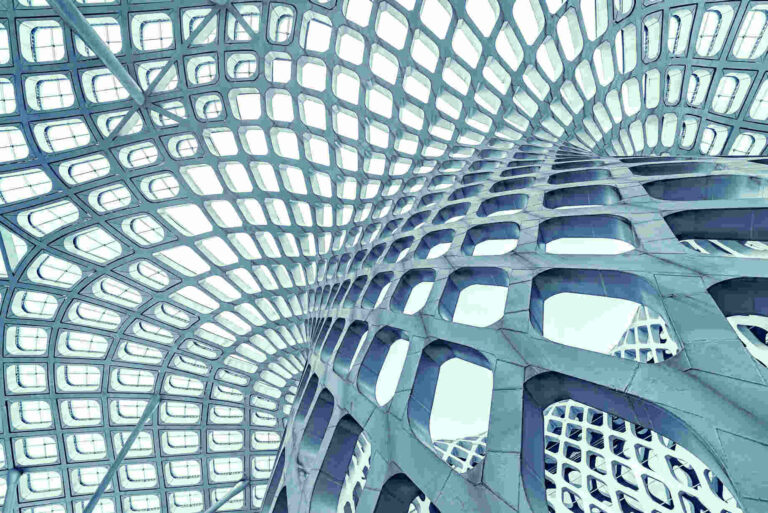5 Ways Artificial Intelligence Is Changing Architecture
The technological concept of artificial intelligence (AI) has been around for more than 60 years. In the last two decades, it has disrupted many industries, from advertising to healthcare. Yet one of the fields that are relatively late to the trend is architecture.
Some architects are suspicious of AI. Others are not sure why it can be useful. But one thing is for sure, the revolution has already begun, and it is dramatically changing the way we think of architecture and design.
Big Data Will Transform The Way We Design
Artificial intelligence is a computer-based concept that is designed to learn skills and evolve as a result. Meaning, as the name implies, artificial intelligence tries to simulate human intelligence with machines. Some of the more common applications of AI include expert systems, natural language processing, speech recognition, and machine vision.
The way AI systems learn is through data. AI engines process and synthesize massive sources of data and utilize it through complex calculations to reach “thoughtful” insights and then actions. And so, areas where big datasets exist stand to gain most from AI.
Despite the delay in the introduction of AI, architecture lends itself perfectly to the way these systems are designed. With almost infinite amounts of architectural data collected and preserved for centuries, and an abundance of data points to consider in each design, architecture technology is where AI can truly shine. The ability to utilize collected data in milliseconds is already changing the way we design.
Here are five big ways in which AI is already shaping the field:
#1 Cut Down Planning Time
A good human architect never takes shortcuts. With people’s lives at stake, each building and space has to be designed meticulously and abide by countless standards. However, AI systems can take shortcuts instead, cutting down the time it takes to plan a structure.
Architecture AI is not here to replace the creative vision of the architect or the complex questions they encounter. However, appropriately leveraged, architecture AI can use data to plan quickly and efficiently the bigger picture of every structure, taking into account construction, operations, building standards, and even conceptual design elements. This allows architects to design better, long-lasting projects without wasting time on basic data analysis.
#2 Optimize Building and Design Efficiency
Every human architect must grapple with the enormous amount of calculations necessary to create a design that is both conceptually pleasing and prioritizes resource efficiency. Fed with the relevant data, AI software can make these same complex calculations in seconds, producing an optimized environmental analysis for any condition.
Data points such as temperature, air quality, energy costs, etc, are easily collected and reached, but without software assistance, it can take weeks, and even months, to compile them. The technology that allows harnessing this amount of data to optimize a design automatically did not exist a decade ago. As technology advances, it becomes more and more accessible to everyone, architects or not.
Read more:
- How generative AI is disrupting the real estate industry
- How To Optimize Office Space Planning with generative AI?
- Employees’ New Needs Are Changing The Traditional Office
#3 Make Construction Easier and Faster
Construction is the most time-consuming and complicated part of the process of creating a new building. It contains countless moving parts, room for error, and requires a lot of problem-solving. And just like architecture, construction is one of the least technologically advanced industries in the world. Sometimes, bringing an architect’s vision to life can take years of planning on the construction side.
AI can completely change the construction industry. Besides using autonomous or semi-autonomous machinery to help with labor, AI software can help with construction-site analysis, decreasing safety hazards, and determining work processes. With access to data and smart modeling, AI can save manpower, time, and risks from every construction project.

#4 Introduce Smart Cities
Around the world, AI is already being used to optimize flow in museums, airports, and more. On the next level, AI can be used to inform design on a much larger scale – cities. AI opens the possibility of taking into account countless data points, making connections between countless interactions in city structures.
City planning is one of the most complex tasks there are when it comes to precision planning. Using AI, architects can understand much faster not only the traffic flow in one building but in an entire city and adapt their designs accordingly.
Some cities around the world are already embracing the trend. In Singapore, you might encounter hospitals with a staff that includes robots or autonomous taxis roaming the streets. In Amsterdam, real-time traffic monitoring is used to create a more sustainable system. Seol has installed thousands of sensors around the city, providing citizens with real-time information on pollution levels in the city.
#5 Walk People Through Structures Before They’re Built
Combined with advanced generative design technology such as augmented reality (AR) and advanced AutoCAD architecture software, AI can transform the customer experience for architects, designers, and even real estate brokers. With quick AI-based planning and advanced simulation tools, architects can allow clients to have a real-world experience quickly and seamlessly. Simulating everything from aesthetics, to natural light, to acoustics, advanced generative design tools can transform floor plans into 3D virtual tours and, in the future, virtual tours into AR experiences.

With qbiq’s planning engines, the future is already here. Providing AI-driven layout planning, with qbiq you can simply upload your floor plans and receive fully optimized layout planning alternatives in seconds. For an enhanced customer experience, qbiq also provides instant 3D tours of each alternative at no added time.
Want to hear more about what qbiq can do for your business? Request a demo




